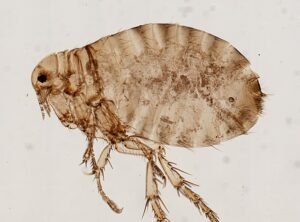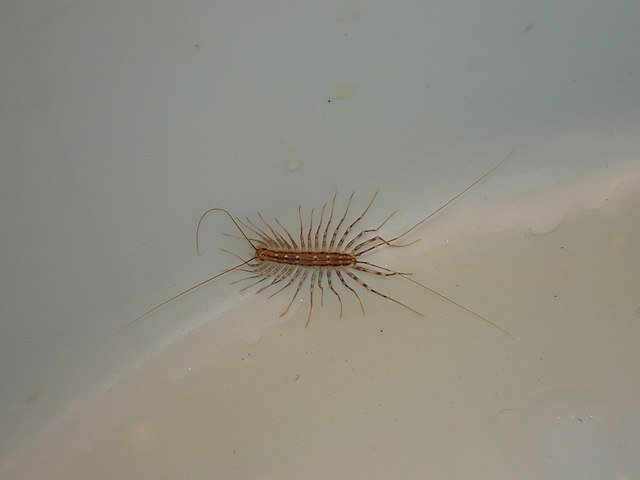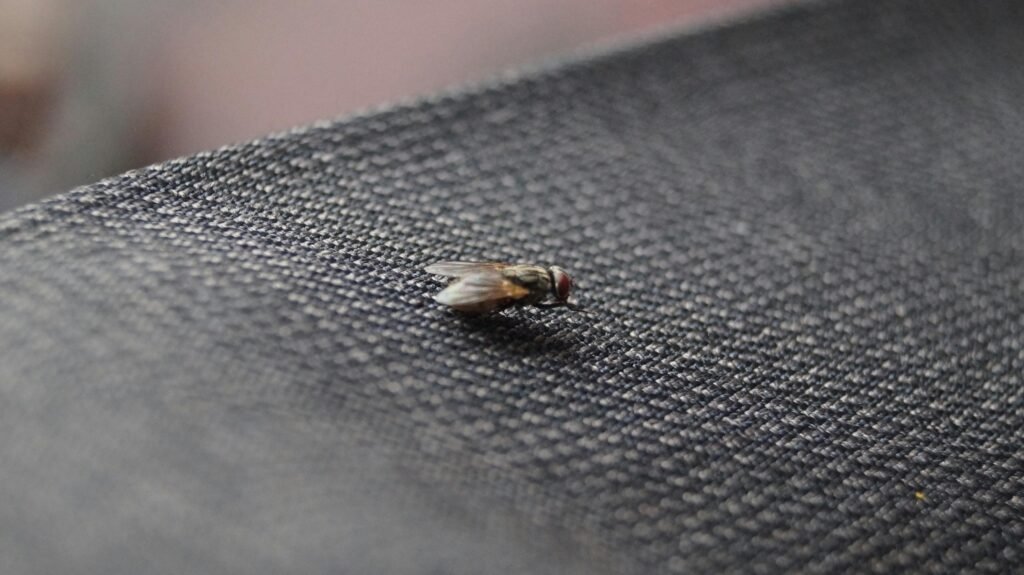Human Fleas (Pulex irritans): The Forgotten Bloodsuckers Still Around
 When most people think of fleas, they imagine pets scratching like crazy — cats or dogs jumping around, not humans. But the human flea (Pulex irritans) is a real species, and despite its name, it doesn’t stick to humans only.
When most people think of fleas, they imagine pets scratching like crazy — cats or dogs jumping around, not humans. But the human flea (Pulex irritans) is a real species, and despite its name, it doesn’t stick to humans only.
In my years in pest control, I’ve seen flea infestations in homes that had no pets at all — usually caused by human fleas or animal fleas that switched hosts. These pests can feed on dogs, cats, pigs, rats, and humans alike. And while they’re not as common as cat fleas (Ctenocephalides felis) or dog fleas (Ctenocephalides canis), when they appear, they cause just as much chaos.
Human fleas were once widespread across Europe and North America, especially before modern sanitation. Today, they mostly survive in rural or agricultural areas, often linked to livestock or wildlife nests. But with increasing contact between urban and rural environments, they’re making small comebacks — especially in older buildings and animal shelters.
Identification
The human flea (Pulex irritans) looks very similar to other flea species, so proper identification matters.
Main features:
Size: 2–3.5 mm long.
Color: reddish-brown to dark brown.
Body: laterally compressed (flat from side to side).
Legs: long, powerful hind legs made for jumping.
Eyes: visible; mouthparts adapted for piercing and sucking.
No combs (ctenidia), which helps distinguish them from cat and dog fleas.
Key difference:
Human fleas lack both the genal comb (on the face) and the pronotal comb (on the neck area). That’s the main feature entomologists use to separate them from other fleas.
Without a microscope, the distinction is nearly impossible. For homeowners, the most reliable signs are bites on humans combined with the absence of pets, or infestations originating from livestock or wild mammals.
Biology and Ecology
Fleas have a complete life cycle with four stages: egg, larva, pupa, and adult.
Human flea life cycle:
Eggs: laid in bedding, cracks, or near host resting areas.
Larvae: feed on organic debris, dried blood, and adult flea feces.
Pupae: cocoon stage; resistant to insecticides and environmental stress.
Adults: emerge when they sense vibrations, heat, or CO₂ from a host.
In ideal conditions (warmth + humidity), the full cycle takes about 3–4 weeks.
However, fleas can survive months in the pupal stage, waiting for a host.
Pulex irritans is not host-specific, meaning it can survive on multiple animals. That’s why you can find them in:
Pig farms and barns.
Poultry houses.
Rural homes near wildlife nests (foxes, badgers, rodents).
Occasionally, inside human dwellings after long vacancy periods.
Fleas prefer warm, humid environments — indoor carpets, cracks, or bedding are ideal breeding zones.
Global Distribution
The human flea is cosmopolitan — found on every continent except Antarctica.
It thrives especially in temperate and tropical regions where animals and humans live closely together.
Common areas of presence:
North America: rural Midwest, Mexico, southern U.S. states.
Europe: Southern and Eastern Europe, especially old farmhouses.
Latin America: Peru, Bolivia, Ecuador (associated with pigs).
Africa: rural households and schools, often coexisting with tungiasis (caused by Tunga penetrans).
Asia: India, Thailand, Indonesia — in agricultural or mixed-use buildings.
While cat fleas dominate cities, human fleas still show up in rural pest control jobs — especially in barns, cabins, or old storage areas.
Risks and Damage
The bites of human fleas are itchy, irritating, and can become infected from scratching. They often appear in clusters on legs, ankles, and waistline — areas where clothing fits tight.
Health risks:
Secondary skin infections (from scratching).
Allergic reactions (swelling, redness, rash).
Transmission of pathogens:
Yersinia pestis (plague bacterium) — historically linked, though rare today.
Rickettsia felis and Bartonella henselae — both recorded in flea populations worldwide.
Economic and psychological damage:
Loss of business reputation (hotels, farms, kennels).
Customer complaints and negative reviews in hospitality.
Panic or misidentification as bed bugs.
In one case, a farm client in central Greece called me after two weeks of “mysterious bites.” He had no cats or dogs. We found Pulex irritans emerging from cracks near pig stalls. The fleas had jumped to humans after the animals were sold.
Signs of Infestation
1. Bites:
Small red bumps with a central puncture.
Typically on lower legs and feet.
Itchy and often appear in lines or clusters.
2. Jumping insects:
If you see tiny brown dots jumping near carpets, furniture, or animal bedding, it’s almost certainly fleas.
3. Flea dirt:
Black or dark brown specks (flea feces) visible on bedding or skin. When placed on a wet tissue, they turn reddish (digested blood).
4. Pets scratching or restless animals:
Even if human fleas don’t prefer pets, they can bite them when populations are high.
5. Unoccupied rooms with activity:
Fleas often remain dormant until vibrations or heat “wake” them — leading to sudden bursts of bites when someone enters a rarely used room.
Control Methods
Eliminating human fleas requires a systematic approach, not just spraying.
Step 1: Inspection
Check animal bedding, floor cracks, under furniture.
Identify possible wildlife access points (rodents, foxes, pigeons).
Confirm whether fleas are Pulex irritans, cat fleas, or dog fleas — each requires a slightly different plan.
Step 2: Vacuuming
Vacuum thoroughly across carpets, skirting boards, and upholstery. This removes eggs, larvae, and adults.
Dispose of the bag immediately or seal it tightly.
Step 3: Washing
Wash all bedding, clothes, and soft furnishings in hot water (>60°C) and dry thoroughly.
Step 4: Insecticidal Treatment
Professional control usually involves:
Residual insecticides (pyrethroids, insect growth regulators like methoprene or pyriproxyfen).
ULV misting or fogging for large infestations.
Dust formulations (silica gel, diatomaceous earth) in cracks and crevices.
Always treat all rooms simultaneously — skipping one area lets fleas recolonize.
Step 5: Pet and Animal Control
If pets or livestock are around, treat them with veterinary-approved flea products.
Otherwise, re-infestation will happen within days.
Step 6: Follow-up
Eggs and pupae resist chemicals. Re-treat after 10–14 days to kill newly emerged adults.
Advanced Approaches
For serious or large-scale infestations:
Integrated Pest Management (IPM) approach combining sanitation, exclusion, and targeted treatments.
Heat treatments (>50°C for 1–2 hours) to destroy all life stages without chemicals.
Environmental modification — lowering humidity and temperature slows reproduction.
Wildlife exclusion — sealing points where stray animals enter.
Some pest control companies now use smart traps or CO₂ attractant devices to monitor flea activity post-treatment.
Cultural and Historical Context
Fleas have walked alongside humans for thousands of years.
The human flea (Pulex irritans) was once a common household pest worldwide.
During the Middle Ages, fleas were associated with poor hygiene and crowding — conditions that fueled outbreaks of the bubonic plague. Although the plague was mainly spread by rat fleas (Xenopsylla cheopis), Pulex irritans was often found on humans and domestic animals in the same homes.
Even in the 19th century, flea markets (the term itself!) originated from the trade of old, flea-infested clothes and furniture in Paris.
Today, the human flea is rare in cities but persists in rural life — a reminder of how closely our health and hygiene have evolved alongside pest control.
FAQ
Q1: Can human fleas live only on humans?
A: No. Despite their name, they can feed on various animals like dogs, pigs, and rodents.
Q2: How do I know if I have human fleas or cat fleas?
A: It’s hard to tell without a microscope. Usually, human fleas are found in homes without pets, while cat fleas dominate in pet households.
Q3: Are human fleas dangerous?
A: They can transmit bacteria and cause allergic skin reactions, but serious diseases are rare today.
Q4: How long do fleas live without a host?
A: Adult fleas can survive for weeks or even months waiting for a blood meal, especially in cool, humid conditions.
Q5: Do human fleas jump on beds?
A: Yes, they can. They often hide near the floor but can jump over 20 cm high — enough to reach beds and furniture.
Q6: What’s the fastest way to get rid of fleas?
A: Vacuum daily, wash bedding in hot water, and call a professional pest control company for proper insecticidal treatment and follow-up visits.
Final Thoughts
Human fleas (Pulex irritans) may sound like something from old history books — but I still see them occasionally in modern pest control work, especially in rural homes or buildings where animals and people live close. They’re tough, persistent, and they don’t care if you’re clean or not. Once they find a place to feed and breed, they’ll take it.
The biggest mistake homeowners make is treating only what they can see — a quick spray or vacuum and thinking it’s over. But flea eggs and pupae are hidden deep in cracks, carpets, or behind furniture. That’s why infestations come back after a week or two.
To stop human fleas, you need a full plan:
Remove any possible animal sources.
Clean and vacuum daily.
Wash all fabrics with hot water.
Use professional insecticides or hire a licensed pest control technician.
If you have pets or livestock, make sure they are treated by a vet at the same time — otherwise, it’s like trying to empty a bathtub without closing the tap.
Even though modern hygiene made Pulex irritans rare in cities, they’re still around — proof that nature always finds a way to adapt. With the right knowledge and the right treatment plan, you can take back control fast.
Disclaimer
This article is for informational purposes only. Pest control laws and approved chemicals vary by country. For best results and legal safety, we strongly recommend contacting a licensed pest control professional in your local area. Always make sure that the pest control technician is properly certified or licensed, depending on your country’s regulations. It’s important to confirm that they only use approved products and apply them exactly as instructed on the product label. In most places in Europe, UK, or USA, following label directions is not just best practice—it’s the law.
Author
Nasos Iliopoulos
BSc Agronomist & Certified Pest Control Expert
Scientific Director – Advance Services (Athens, Greece)
Licensed Pest Control Business – Ministry of Rural Development & Food (GR)
References
Oklahoma state University - Human Flea
- PubMed - Human Flea
FAO & WHO (2022). Integrated Pest Management in Public Health.


